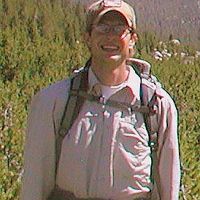Blankinship et al., 2014
Snowmelt timing alters shallow but not deep soil moisture in the Sierra Nevada.
Blankinship, J.C., Meadows, M.W., Lucas, R.G., and Hart, S.C. (2014)
Water Resources Research.
-
Sierra, COLLABORATOR
-
Sierra, STAFF
-
Sierra, GRAD STUDENT
-
Sierra, INVESTIGATOR
Abstract
Snowmelt was delayed many days using frames with white plastic for comparison with "early snowmelt" plots created by spreading black sand on the snow surface. Blankinship et al., 2014 explains results of these treatments on soil moisture.
Roughly one-third of the Earth's land surface is seasonally covered by snow. In many of these ecosystems, the spring snowpack is melting earlier due to climatic warming and atmospheric dust deposition, which could greatly modify soil water resources during the growing season. Though snowmelt timing is known to influence soil water availability during summer, there is little known about the depth of the effects and how long the effects persist. We therefore manipulated the timing of seasonal snowmelt in a high-elevation mixed-conifer forest in a Mediterranean climate during consecutive wet and dry years. The snow-all-gone (SAG) date was advanced by 6 days in the wet year and 3 days in the dry year using black sand to reduce the snow surface albedo. To maximize variation in snowmelt timing, we also postponed the SAG date by 8 days in the wet year and 16 days in the dry year using white fabric to shade the snowpack from solar radiation. We found that deeper soil water (30–60 cm) did not show a statistically significant response to snowmelt timing. Shallow soil water (0–30 cm), however, responded strongly to snowmelt timing. The drying effect of accelerated snowmelt lasted 2 months in the 0–15 cm depth and at least 4 months in the 15–30 cm depth. Therefore, the legacy of snowmelt timing on soil moisture can persist through dry periods, and continued earlier snowmelt due to climatic warming and windblown dust could reduce near-surface water storage and availability to plants and soil biota.
Keywords:
snow manipulation;soil water content;Southern Sierra critical zone observatory
Citation
Blankinship, J.C., Meadows, M.W., Lucas, R.G., and Hart, S.C. (2014): Snowmelt timing alters shallow but not deep soil moisture in the Sierra Nevada . Water Resources Research.. DOI: 10.1002/2013WR014541
 This Paper/Book acknowledges NSF CZO grant support.
This Paper/Book acknowledges NSF CZO grant support.
Explore Further





